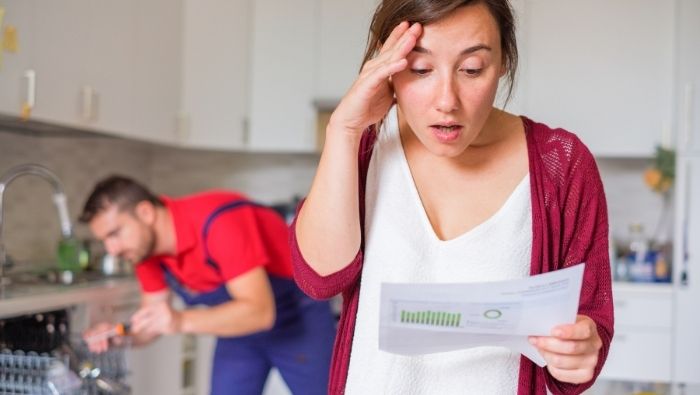How To Avoid a Plumber’s House Call

Wondering what that odor is coming from your drain? Use these guidelines to ‘nose’ out the odor and avoid a plumber’s expensive house call.
Our noses have amazing adaptability to odors that either slowly come about or that we are exposed to for some time.
As an example, smokers typically don’t notice the smell of cigarettes because they are exposed to it most of the time. Cat lovers often don’t realize how cluttered the litter box is because they slowly adapt to the smell.
To prove this, stay out of your home for a week or so and then come back. You might be amazed at what you smell. Another thought is to bring a friend over who hasn’t been in your home for a while and ask them what odor if any, they smell.
What’s That Smell?
What if you came into your home or had an honest-speaking friend come in and there’s a foul odor? Naturally, you would start sniffing around and the more you sniffed, the more you’d become convinced the odor smells like crap! By “crap,” I mean the nose-burning, eye-tearing smell of fermenting, raw sewage.
Well, there’s a good chance that’s exactly what it is.
Sign Up for Savings
Subscribe to get money-saving content by email that can help you stretch your dollars further.
Twice each week, you'll receive articles and tips that can help you free up and keep more of your hard-earned money, even on the tightest of budgets.
We respect your privacy. Unsubscribe at any time.
Plumbing 101
Before you call a plumber, ask yourself if there are any sinks, showers, bathtubs, or floor drains that seldom or never get used.
With that question out of the way, let’s discuss a fairly misunderstood concept of “Plumbing 101.”
All of the drain lines in your home from sinks, showers, tubs, and floor drains either directly or indirectly tie into some form of the sewage system. All kinds of things such as insects, rats, and especially evil, eye-burning odors exist in those sewage systems.
All that keeps any of these elements from seeping back into your home or office is a piece of plumbing called a “trap.”
Look under your kitchen or bathroom sink and you’ll see a piece of pipe in the drain line shaped like a “U.” That is a trap. Its function is to hold enough water in that drain line to block odors and other elements from coming back in from the sewage system.
By now someone has to be saying, “Hey, you didn’t mention toilets.” That’s because toilets have a trap built into them.
That standing water in a toilet isn’t there just to allow toilet paper and other things to float around. Yes, the water assists in several ways, but its primary function is to block the largest drain pipe going from your home to keep out all the mystical things that abound within a sewer.
If you have a sink, tub, toilet, or floor drain that is seldom or never used, the water in that trap slowly evaporates and you start to lose the blocking action of it (floor drains are notorious for this). Once the water level evaporates down to a certain point, sewage smells can and will seep into your home. Since this can happen slowly, the odor might not be quickly noticed as pointed out in the beginning.
I’ve saved quite a few people an expensive plumbing call by simply having them run some water in those unused sinks and tubs or pouring about one-half gallon of water down a floor drain. This is also a good routine to get into on a bi-monthly or more often basis.
Reviewed August 2023
Wouldn't you like to be a Stretcher too?
Subscribe to get our money-saving content twice per week by email and start living better for less.
We respect your privacy. Unsubscribe at any time.
Popular Articles
- 7 Habits of Highly Frugal People
- 5 Simple Budget Cuts That Can Save $200 a Month
- How to Track Down Unclaimed Funds Owed You
- 32 Ways to Save Money on Your Utility Bills
- Do You Need Credit Life Insurance When Buying a New Car?
- How to Maximize Profits When Selling Online
- Staying Motivated to Continue Digging Yourself Out of Debt
On After50Finances.com
- 9 Things You Need to Do Before You Retire
- You Didn’t Save Enough for Retirement and You’re 55+
- When Empty Nesters Reorganize and Declutter Their Home
- Reinventing Your Career in Your 50s or 60s
- What Mature Homeowners Should Know about Reverse Mortgages
- 2 Reasons to Collect Social Security Benefits As Soon As Possible

